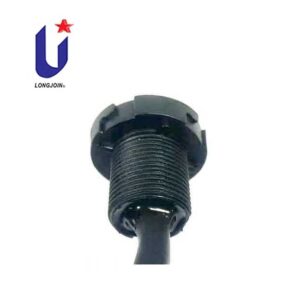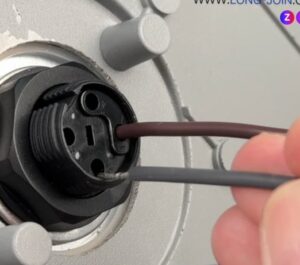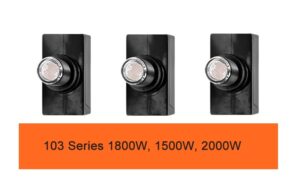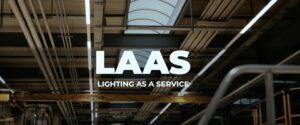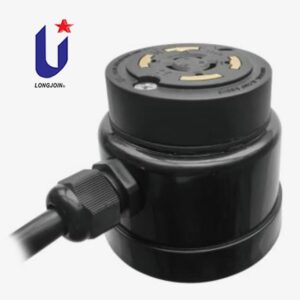Gli standard globali sulle fotocellule stanno convergendo: cosa significa per i produttori di illuminazione stradale nel 2025
Introdurre
Grandi cambiamenti stanno arrivando nell'illuminazione per esterni. Presto, il settore cambierà radicalmente.
Nel 2025, il ISO E CEI lancerà uno standard unico e unificato. Riunirà quadri normativi chiave come UL773, EN 60730, Zhaga Libro 18, E ANSI C136.10I produttori di lampioni vedono in questo molto più di una semplice regola. Questo cambiamento globale li aiuta a innovare più rapidamente, ridurre i costi di certificazione e progettare prodotti più intelligenti.
Questa nuova era è particolarmente rilevante per gli stakeholder che utilizzano sensori di illuminazione fotoelettrici, sistemi di controllo fotoelettrici e prese standardizzate Zhaga o NEMA nell'illuminazione stradale e nelle implementazioni delle città intelligenti.
Quindi, cosa prevede esattamente questo nuovo standard? E perché dovrebbe interessarti?

Cosa coprirà lo standard globale del 2025?
Vi state ancora chiedendo cosa rende diverso lo standard del 2025? Ve lo spieghiamo in modo semplice. Ogni regione aveva le sue regole. Ora seguiamo tutti un unico manuale universale. Questo significa meno congetture, più efficienza.
Lo standard unificato sulle fotocellule del 2025 ha quattro obiettivi principali.
- Protegge le fotocellule.
- Li mantiene al sicuro.
- Li fa funzionare con altri dispositivi.
- Li aiuta a durare più a lungo.
Aree standard principali | Obiettivi di specifica unificati |
Protezione dall'ingresso | IPX4 o superiore come minimo |
Sicurezza elettrica | Norme globali sulla protezione da sovratensione e sulla messa a terra |
Interfacce digitali | Supporto per Zhaga Book 18 e D4i |
Resistenza ai raggi UV/termica | Intervallo minimo da -40°C a +70°C con resistenza ai raggi UV |
Ciò significa meno test ridondanti e un framework di sensori fotoelettrici riconosciuto a livello mondiale, con cui urbanisti, OEM di illuminazione e ingegneri di progetto possono tutti allinearsi.
Per scoprire come Long-join adatta i prodotti ad ambienti difficili, visita il nostro Soluzioni fotocellule con grado di protezione IP65/IP66
Perché questo standard è così importante per i produttori di lampioni stradali?
Se vi è mai capitato di dover destreggiarvi tra diverse certificazioni per diversi Paesi, conoscete il grattacapo. Questo nuovo standard mira a eliminare questa seccatura.
Cercare di soddisfare diversi standard di illuminazione globali può essere estenuante. Un prodotto progettato per il Nord America potrebbe richiedere specifiche diverse per l'Europa o l'Asia. Questo comporta uno spreco di tempo, energia e denaro.
Grazie alla nuova convergenza, i produttori di fotocellule per sistemi di illuminazione stradale ottengono tre grandi vantaggi:
1. Meno problemi di certificazione
Al momento, la maggior parte delle aziende testa i prodotti più volte per ottenere diverse certificazioni. Questo è costoso e richiede molto tempo.
Una volta che lo standard unificato entrerà in vigore:
- Verranno eseguiti solo una volta i test per ingresso, sovratensione ed EMC.
- Non sarà necessario ripetere i test fotometrici per ogni regione.
- È possibile risparmiare fino a 40% sui costi di certificazione.
2. Tempi di commercializzazione più rapidi
Immettere i prodotti sul mercato più rapidamente significa ottenere un ROI migliore. Con meno passaggi normativi da superare, è possibile lanciare un prodotto a livello globale, con meno modifiche.
3. Maggiore fiducia nel marchio
I clienti si affidano ai produttori che anticipano le tendenze del settore. Conformarsi tempestivamente significa distinguersi come fornitore affidabile e intelligente di soluzioni di illuminazione.

In che modo Long-join si sta già allineando allo standard del 2025?
Molti produttori si stanno ancora preparando, ma Long-join ha avuto un vantaggio.
Abbiamo iniziato a prepararci per la convergenza globale nel 2023, allineando i nostri processi di ricerca e sviluppo, produzione e certificazione alle direttive IEC e ISO. Questo ci consente di consegnare più rapidamente e con maggiore sicurezza.
Quali certificazioni soddisfano già i nostri prodotti?
Regione | Certificazione |
America del Nord | Fotocellule certificate UL773 |
Europa | Conforme a CE + RoHS |
Globale | Zhaga Book 18 + interfaccia D4i |
Ambientale | ISO 14001 + ISO 9001 |
Da Prese NEMA a 7 pin A Prese Zhaga con grado di impermeabilità IP, progettiamo per la compatibilità futura, ora.
"Il nostro obiettivo è raggiungere i parametri di riferimento di domani prima che diventino obbligatori."
— CTO di lunga data
Cosa dovrebbero fare i produttori OEM di illuminazione e gli urbanisti per prepararsi?
Aspettare che lo standard scenda non è la mossa migliore. La pianificazione lungimirante inizia ora.
Che tu gestisca l'illuminazione pubblica, acquisti controlli intelligenti o produca dispositivi intelligenti, ecco come essere all'avanguardia.
Dovresti verificare la conformità dei fornitori?
Assolutamente sì. Esegui un'analisi delle lacune nelle certificazioni dei tuoi fornitori. Richiedi prove verificabili come UL773, CE, RoHS, Zhaga Book 18 e registrazioni ISO. Ti risparmierà grattacapi futuri.
Vale la pena dare priorità ai sistemi modulari Zhaga?
Sì. I socket Zhaga supportano aggiornamenti semplici e richiedono una manutenzione ridotta.
Long-join Lampioni stradali con fotocellula predisposti per Zhaga semplificare le modifiche e ridurre i costi.
Dovresti scegliere le fotocellule multiprotocollo?
Certamente. Le città non sono tutte uguali. Il sensore della tua fotocellula deve funzionare con Zigbee, NB-IoT, LoRa, E WifiIn questo modo si adatta senza problemi a qualsiasi sistema.
Presso Long-join, le nostre fotocellule intelligenti supportano diversi protocolli per mantenere agile la tua infrastruttura.
In che modo ciò influisce sul mercato globale dell'illuminazione?
L'unificazione va oltre la conformità. Cambia il modo in cui le città operano.
Interoperabilità e compatibilità aiutano i sistemi di illuminazione a sincronizzarsi con reti più ampie, dai sensori del traffico a quelli dell'inquinamento. Ecco perché questo nuovo standard non riguarda solo le fotocellule, ma anche la connettività.
Problemi attuali | Beneficio standard 2025 |
Standard regionali frammentati | Conformità unificata = accesso più rapido |
Costosi nuovi test per le certificazioni | Riduzione del tempo e del denaro spesi per le approvazioni |
Compatibilità limitata dei sensori | Interoperabilità globale tramite Zhaga/D4i |
I governi vogliono appalti più intelligenti. Una fotocellula affidabile con supporto globale è più che preferibile: è prevista.
Per esempio, Smart Grid del Dipartimento dell'Energia degli Stati Uniti e il Green Deal dell'UE Entrambi pongono l'accento sull'efficienza energetica e sulla standardizzazione. Questo standard globale risponde a questa esigenza.

Cosa cambierà negli appalti e nelle gare pubbliche?
Urbanisti e ingegneri stanno già rivedendo le specifiche di gara. Aspettatevi che il testo richieda:
- Compatibilità del controller di illuminazione D4i/Zhaga
- Sistemi di prese fotoelettriche con grado di protezione IP66+
- Sensore di luce intelligente integrato e protezione da sovratensioni
Non allinearsi a queste specifiche ora potrebbe costarti caro in futuro. Fortunatamente, i prodotti Long-join soddisfano già queste specifiche.
Perché dovresti agire ora?
Prima vi allineerete, più agevole sarà la transizione nel 2025. E chi si muove per primo ha sempre la meglio.
L'allineamento ora significa:
- Inserimento più rapido nei progetti globali
- Riduzione delle rilavorazioni ingegneristiche nel 2025
- Maggiore fiducia nei clienti del settore pubblico
Long-join offre audit di conformità gratuiti e verifiche dettagliate delle specifiche dei prodotti. Visualizza il nostro catalogo completo dei prodotti qui
Conclusione
Lo standard globale sulle fotocellule del 2025 non è solo un documento tecnico: è il via libera a una produzione più intelligente e a un'adozione più rapida di sistemi di illuminazione stradale connessi.
Che tu produca sensori fotoelettrici, gestisca l'illuminazione pubblica o progetti infrastrutture intelligenti per l'intera città, il momento di adattarsi è adesso.
Visita Long-join per scoprire come i nostri prodotti per l'illuminazione stradale a LED con fotocellula e le nostre soluzioni di controllo intelligenti sono già progettati per il futuro.
Insieme, illuminiamo la strada da percorrere.
Link esterni:
●https://www.iso.org/home.html
●https://www.iec.ch/homepage
●https://www.shopulstandards.com/ProductDetail.aspx?UniqueKey=30842
●https://webstore.iec.ch/it/pubblicazione/66089
●https://www.zhagastandard.org/books/overview/smart-interface-between-outdoor-luminaires-and-sensing-communication-modules-18.html
●https://www.zhagastandard.org/books/overview/smart-interface-between-outdoor-luminaires-and-sensing-communication-modules-18.html
●https://www.nema.org/docs/default-source/standards-document-library/ansi-c136-10-2017-contents-and-scope.pdf?sfvrsn=36d2efb_2
● https://en.wikipedia.org/wiki/Narrowband_IoT
● https://en.wikipedia.org/wiki/LoRa
●https://www.energy.gov/smart-grid
●https://en.wikipedia.org/wiki/Wi-Fi
●https://commission.europa.eu/strategy-and-policy/priorities-2019-2024/european-green-deal_it

